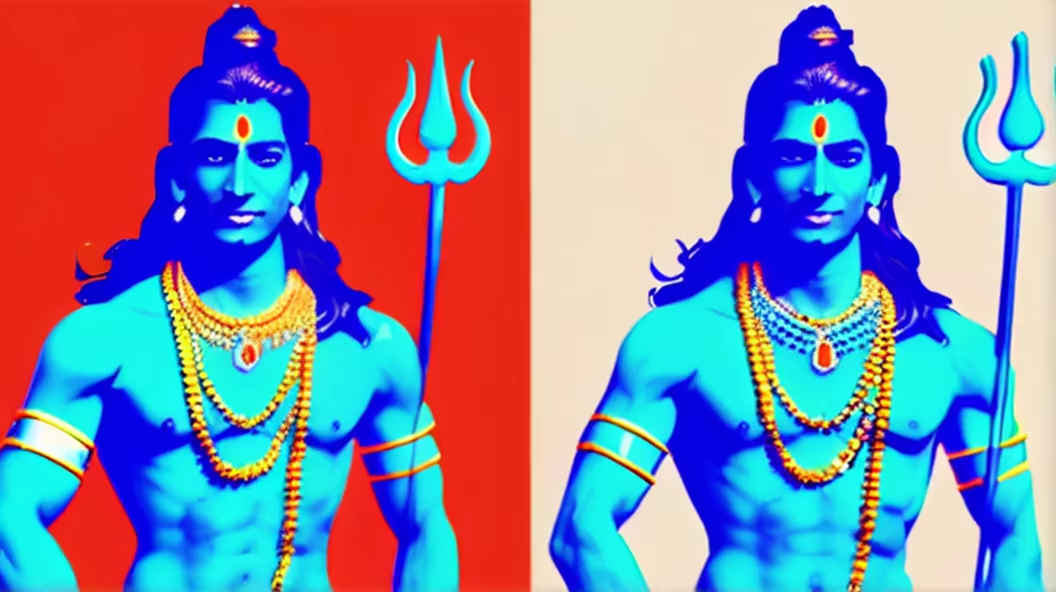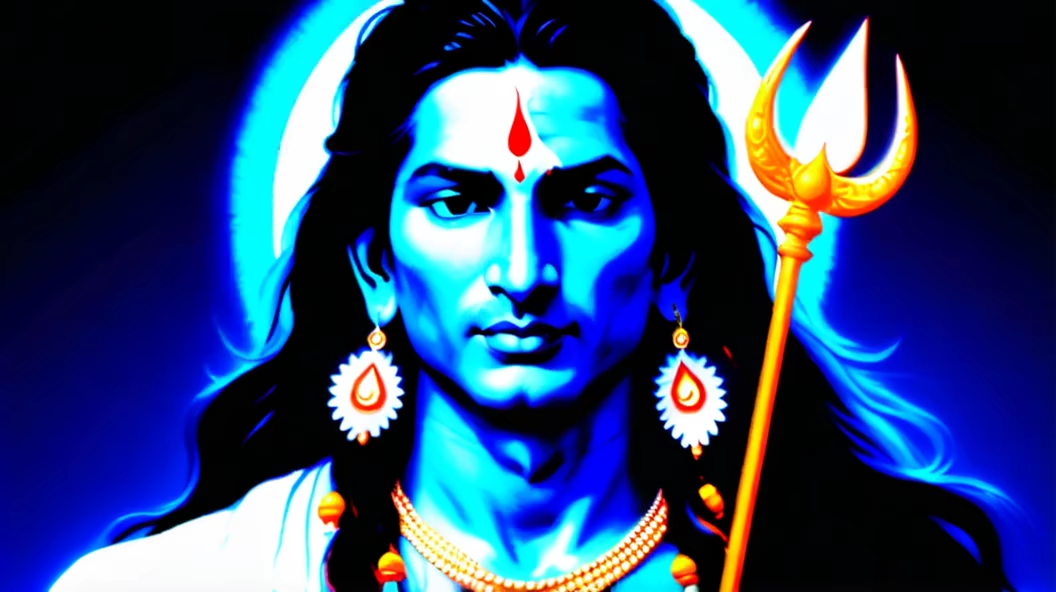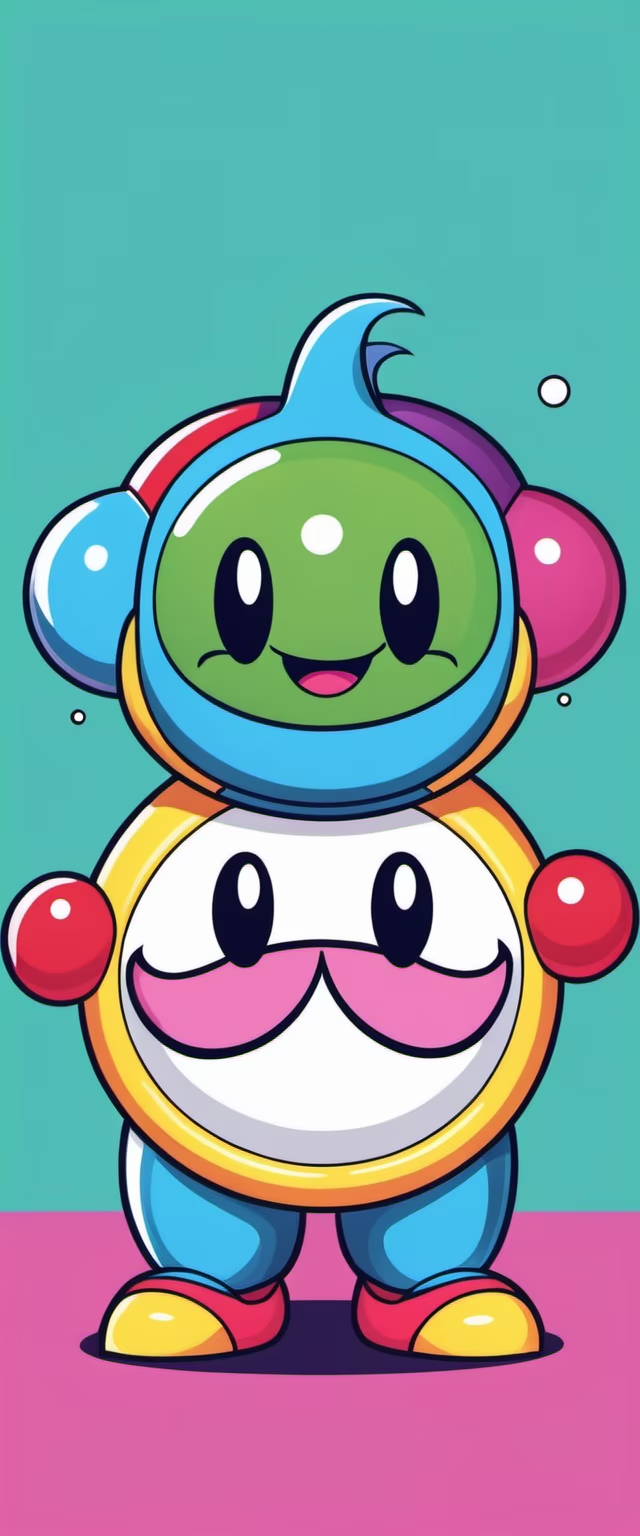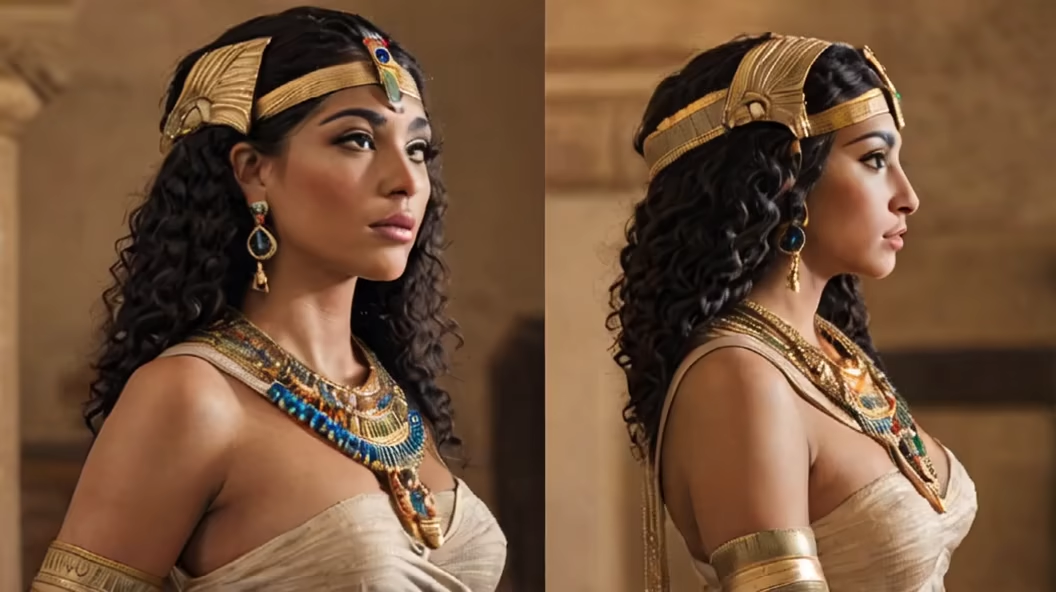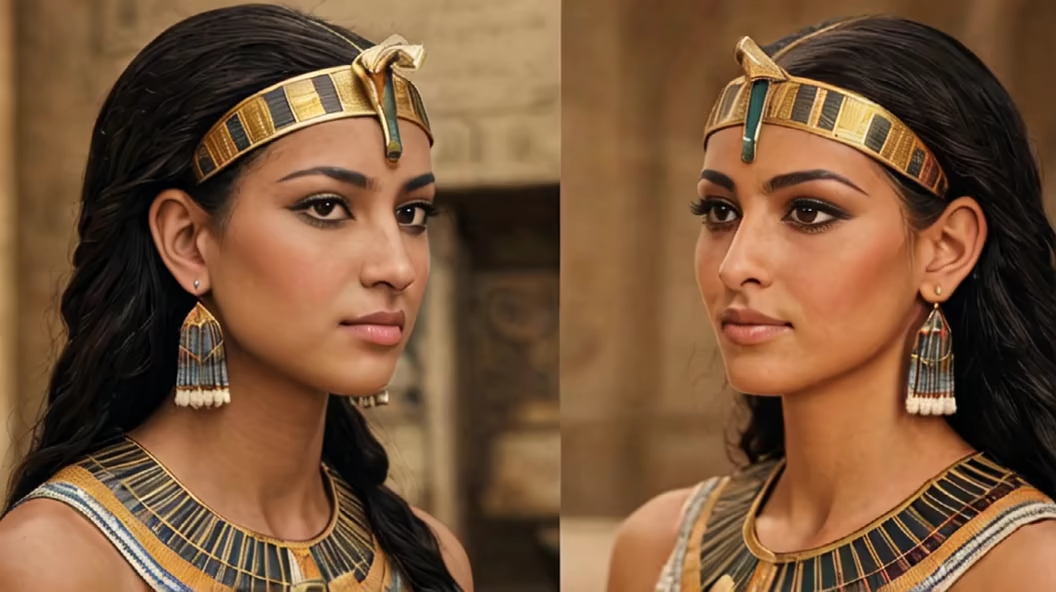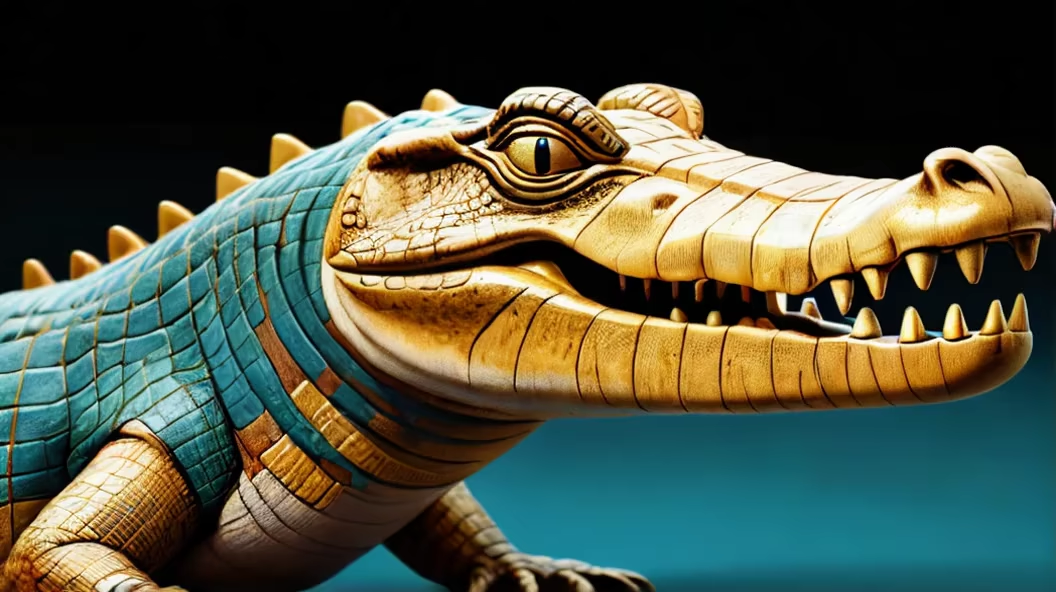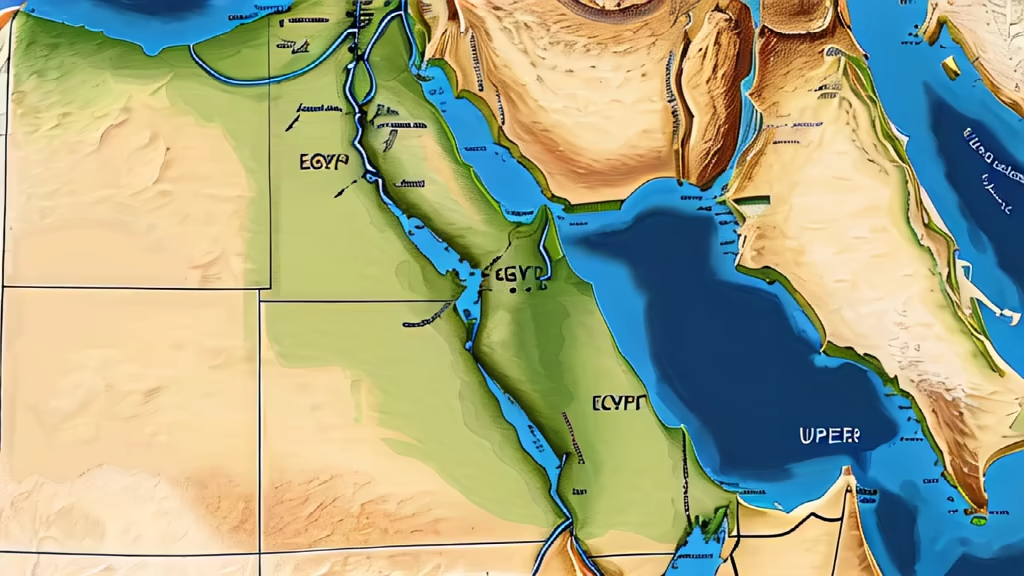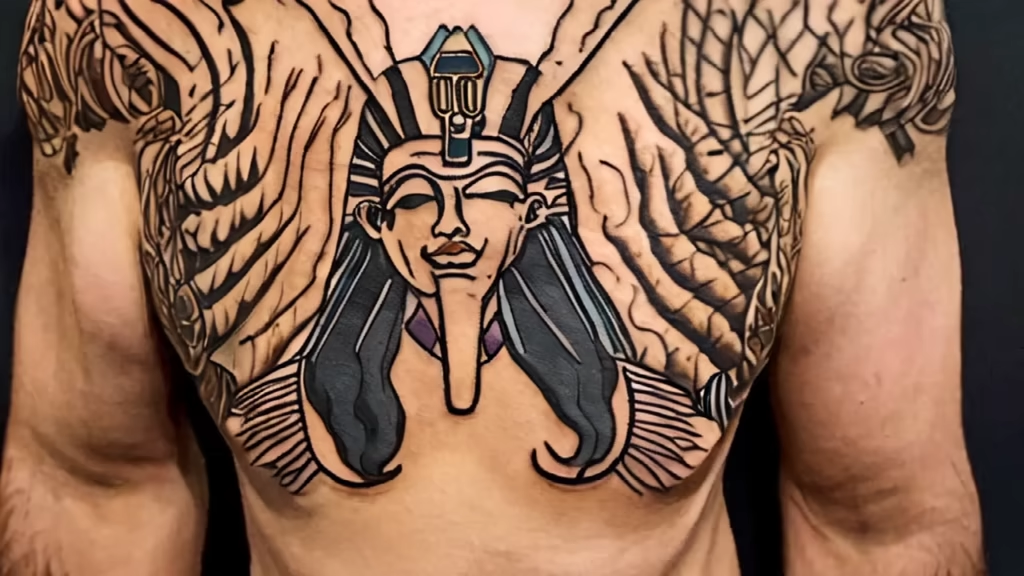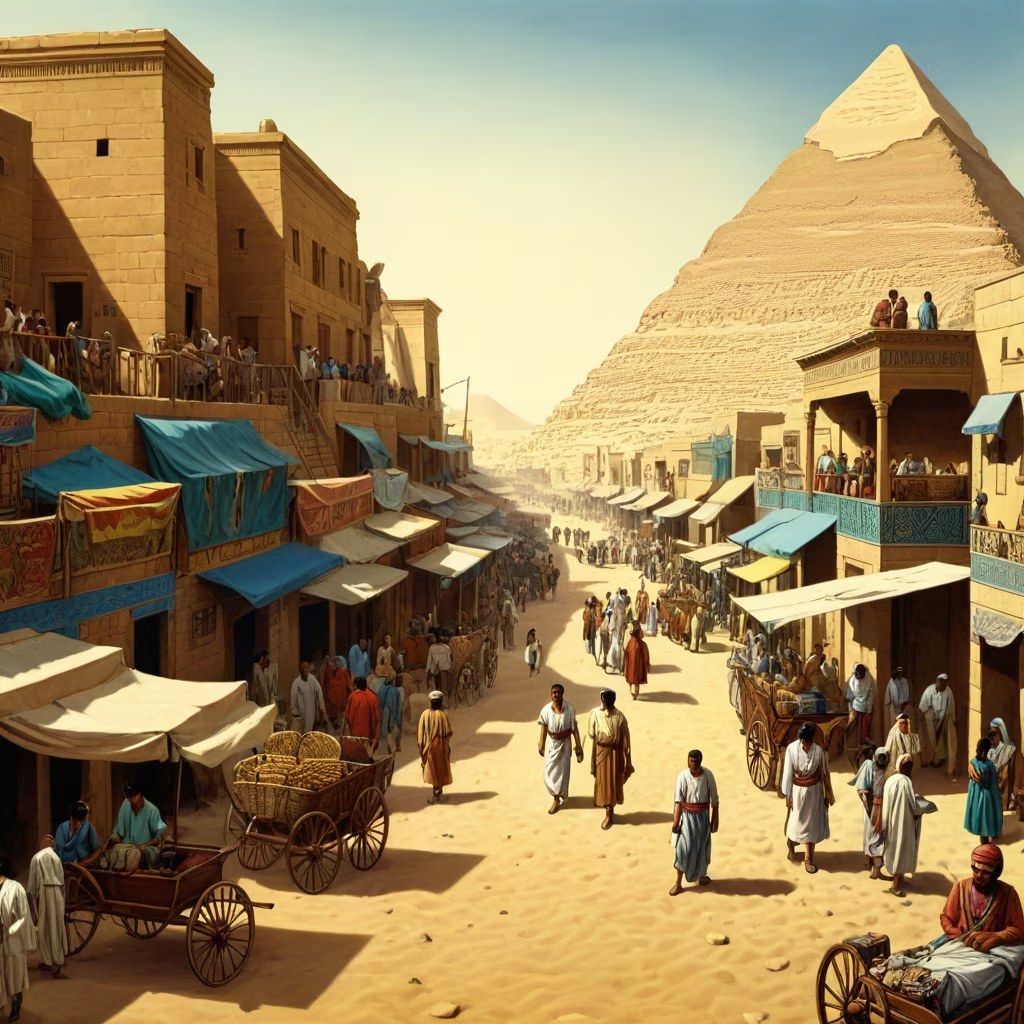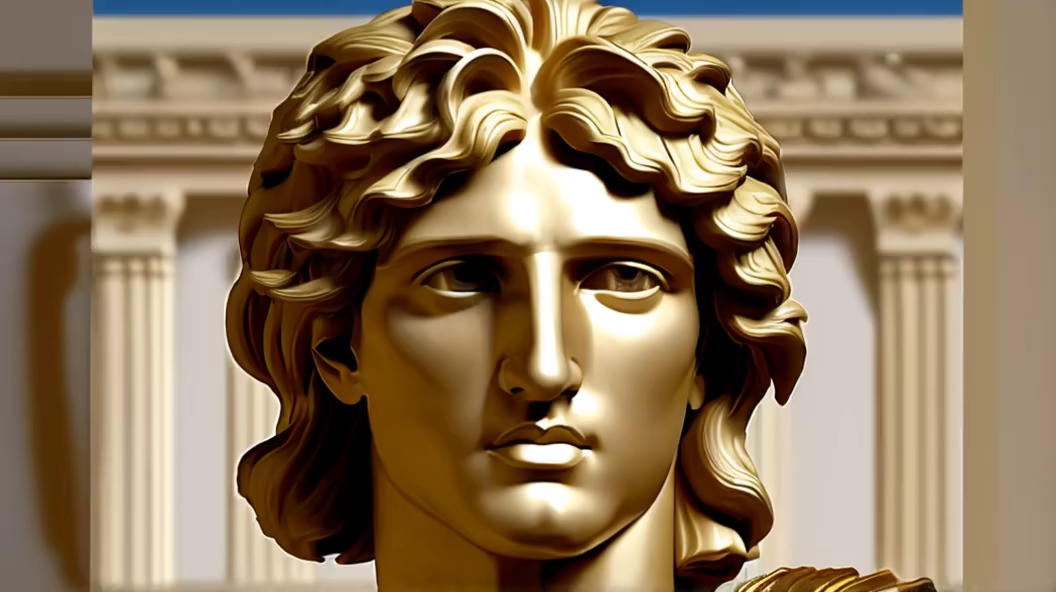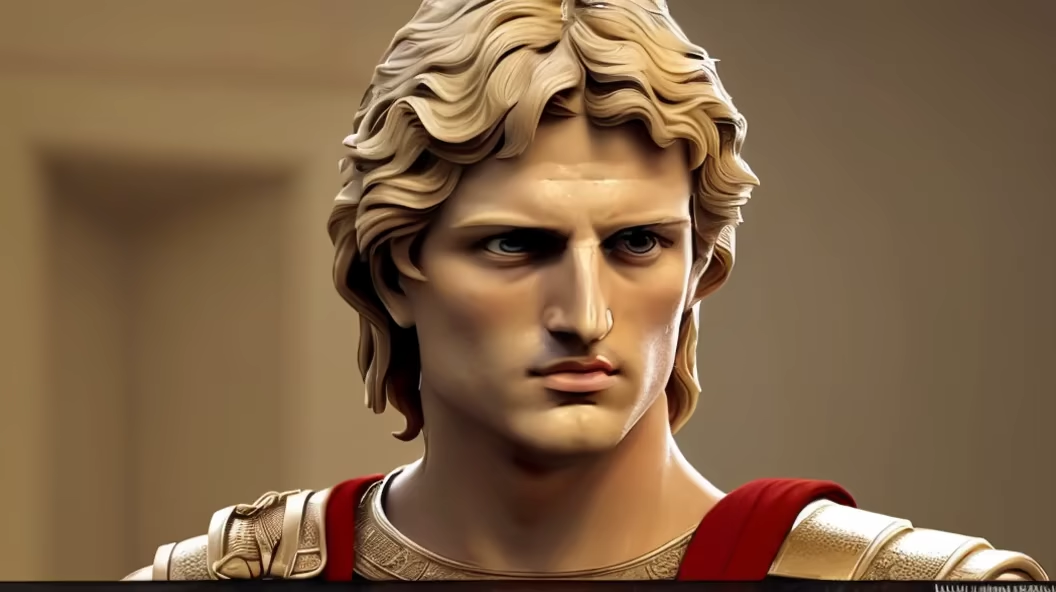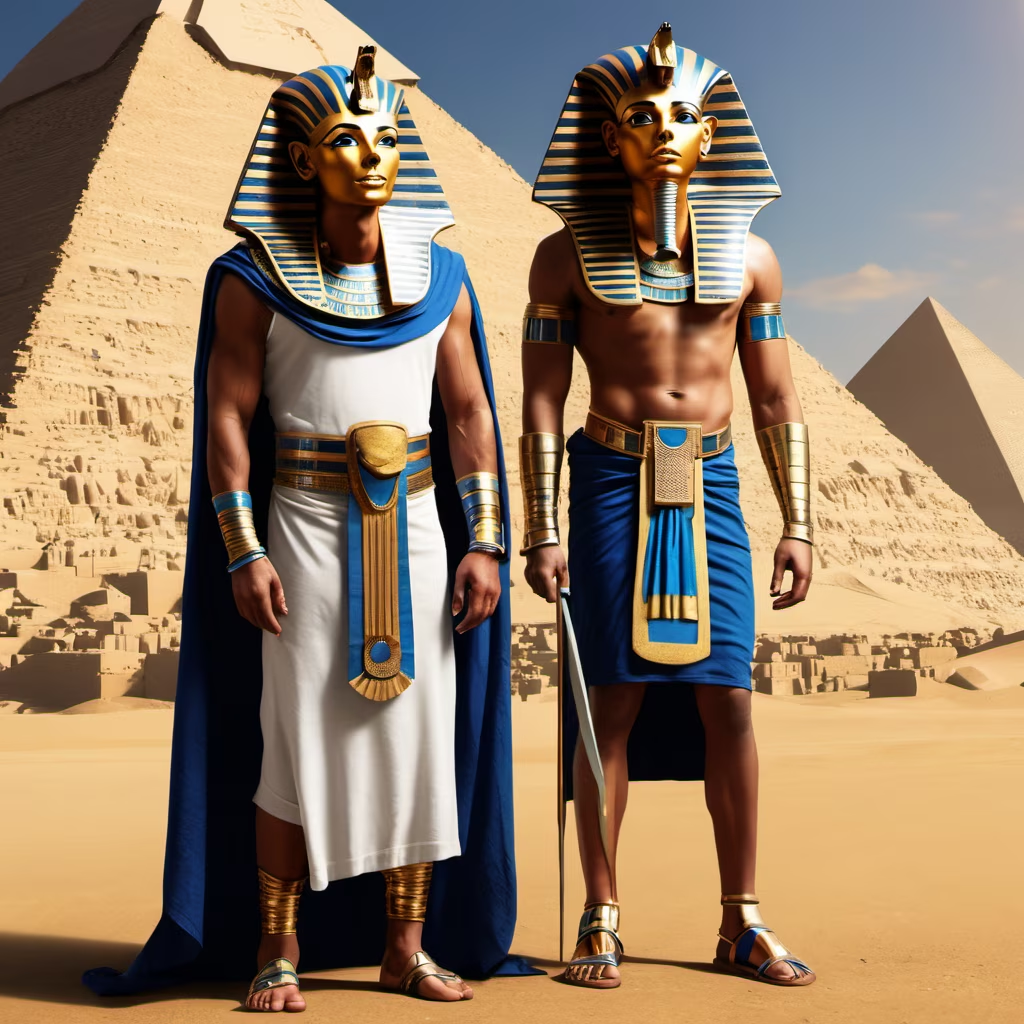



Prompt: - Ancient Egyptian men wearing high heels as a symbol of power - Women adopting high heels in the 16th century - A fashion show featuring models wearing different styles of high heels












Prompt: full body, cat dressed as a Viking, with weapon in his paws, battle coloring, glow hyper-detail, hyper-realism, cinematic
Style: Cinematic


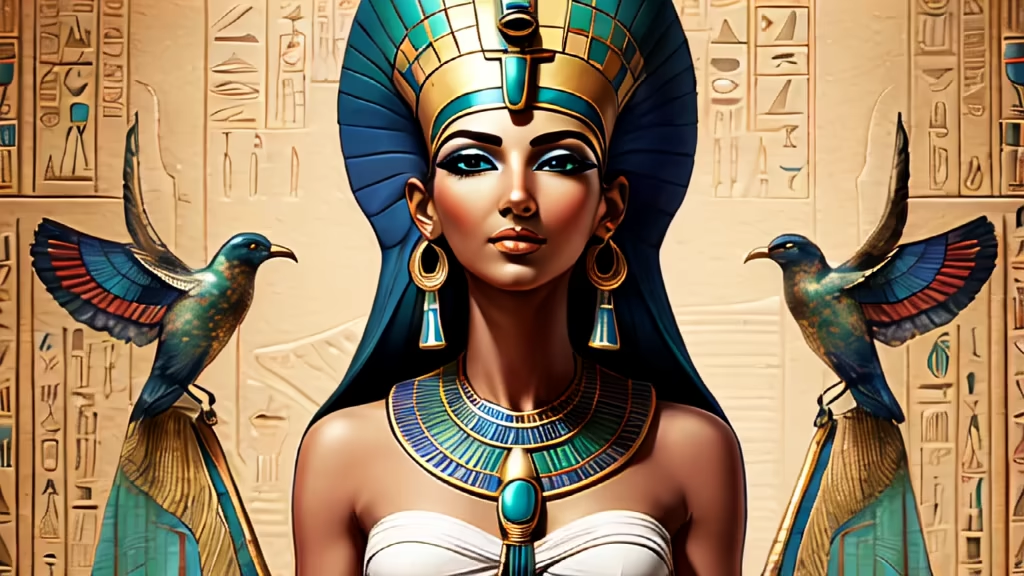
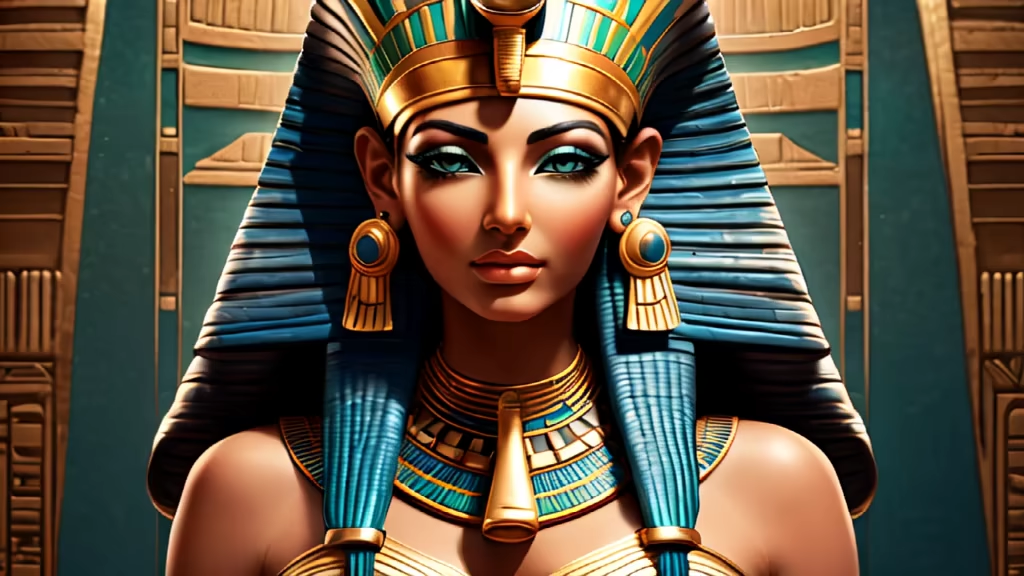
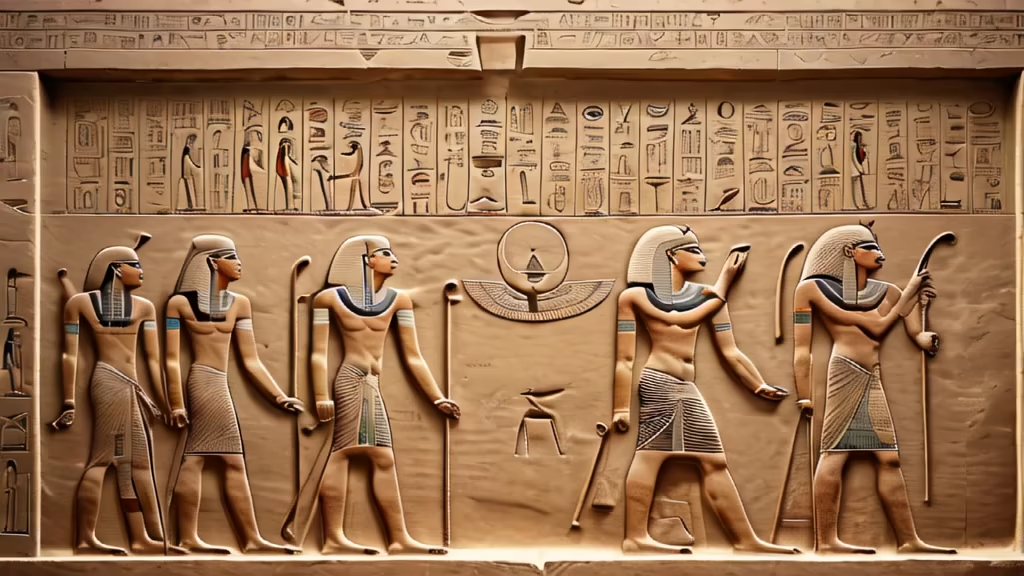
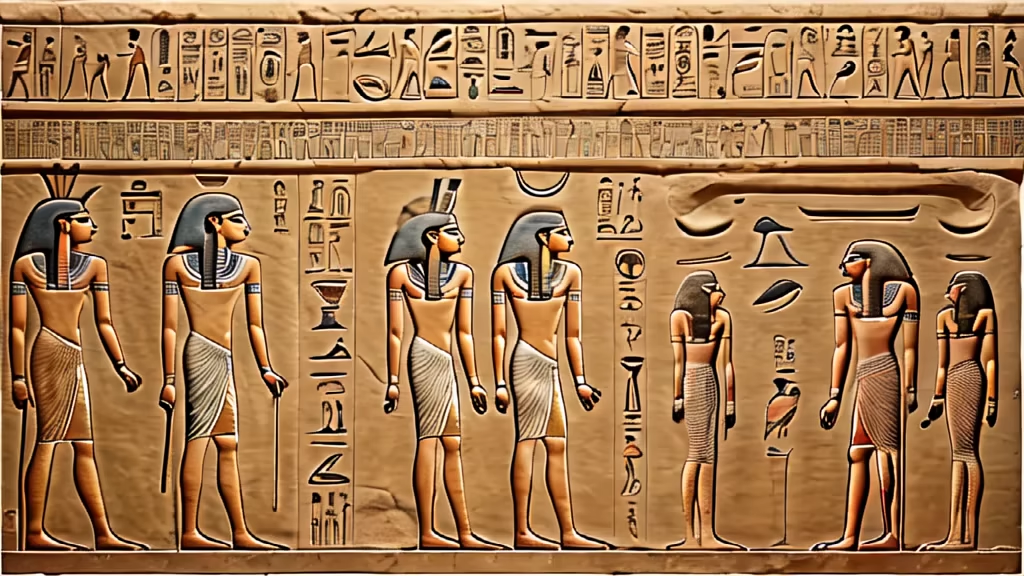

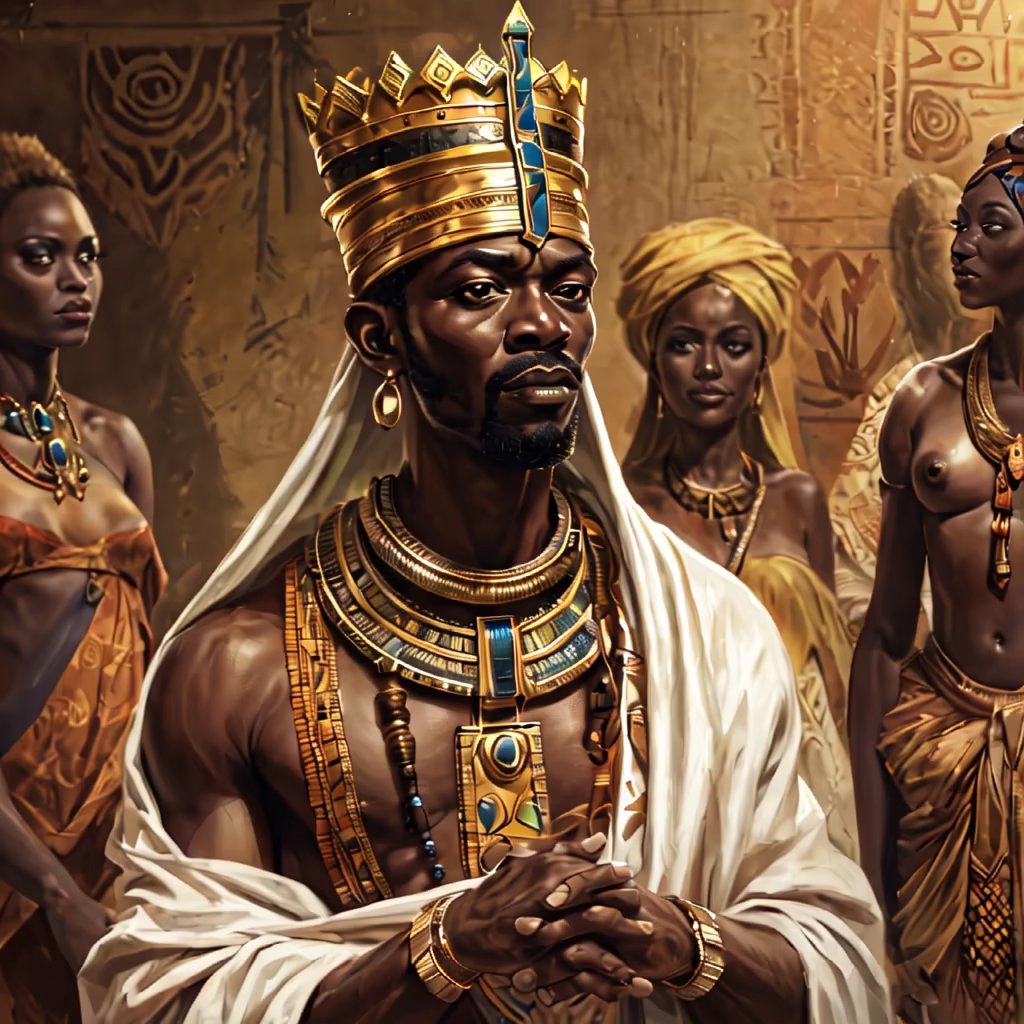


Prompt: as a video game boss of the pyramids of Egypt very stylish and which seems unbeatable, it must represent all the characteristics of Egypt and the pyramids






Prompt: The process of mummification in ancient Egypt involved removing the brain and organs, cleaning the body with palm-wine and aromatics, and filling the belly with spices. The body was then covered in natron for 70 days to dry it out, washed, and wrapped in linen. This was done to preserve the body for the afterlife, a widespread practice in ancient Egypt. The method used varied depending on social class, with different methods used for the rich and elite versus the middle class.


Prompt: The process of mummification in ancient Egypt involved removing the brain and organs, cleaning the body with palm-wine and aromatics, and filling the belly with spices. The body was then covered in natron for 70 days to dry it out, washed, and wrapped in linen. This was done to preserve the body for the afterlife, a widespread practice in ancient Egypt. The method used varied depending on social class, with different methods used for the rich and elite versus the middle class. (hyperdetailed, magritte, mondrian, casey baugh, henry asencio, sfumato, shephard fairey, impasto)


Prompt: The process of mummification in ancient Egypt involved removing the brain and organs, cleaning the body with palm-wine and aromatics, and filling the belly with spices. The body was then covered in natron for 70 days to dry it out, washed, and wrapped in linen. This was done to preserve the body for the afterlife, a widespread practice in ancient Egypt. The method used varied depending on social class, with different methods used for the rich and elite versus the middle class. (plain background, watercolor/sharpie, triadic diochromatic gradient, cybernetic, posterized, solarized, thick bold cursive outlines, feline, dot matrix, bar code, vector, biomorphic, wildstyle, quartz inversion, longform, vulpine, glitch, diversiformic, metallic, deconstructed, ebullient, bauhaus, unclutterd face, weathered, grunge, engineering, exploded, irreverent, oxidized, sculptural, art deco, fauvist, extreme asymmetric interlacing, dadaist, spherometric, frenetic, halftoned, patchwork, enchained, isometrically 3d, ian miller, jarek kubicki, henry asencio, de lempicka, kinkade)


Prompt: An exact replica of the following picture as a line drawing in the style of Disney. https://www.nationalgeographic.com/content/dam/expeditions/destinations/africa/private/Egypt/hero-egypt-pe.jpg.adapt.nineteen-hundred.jpg








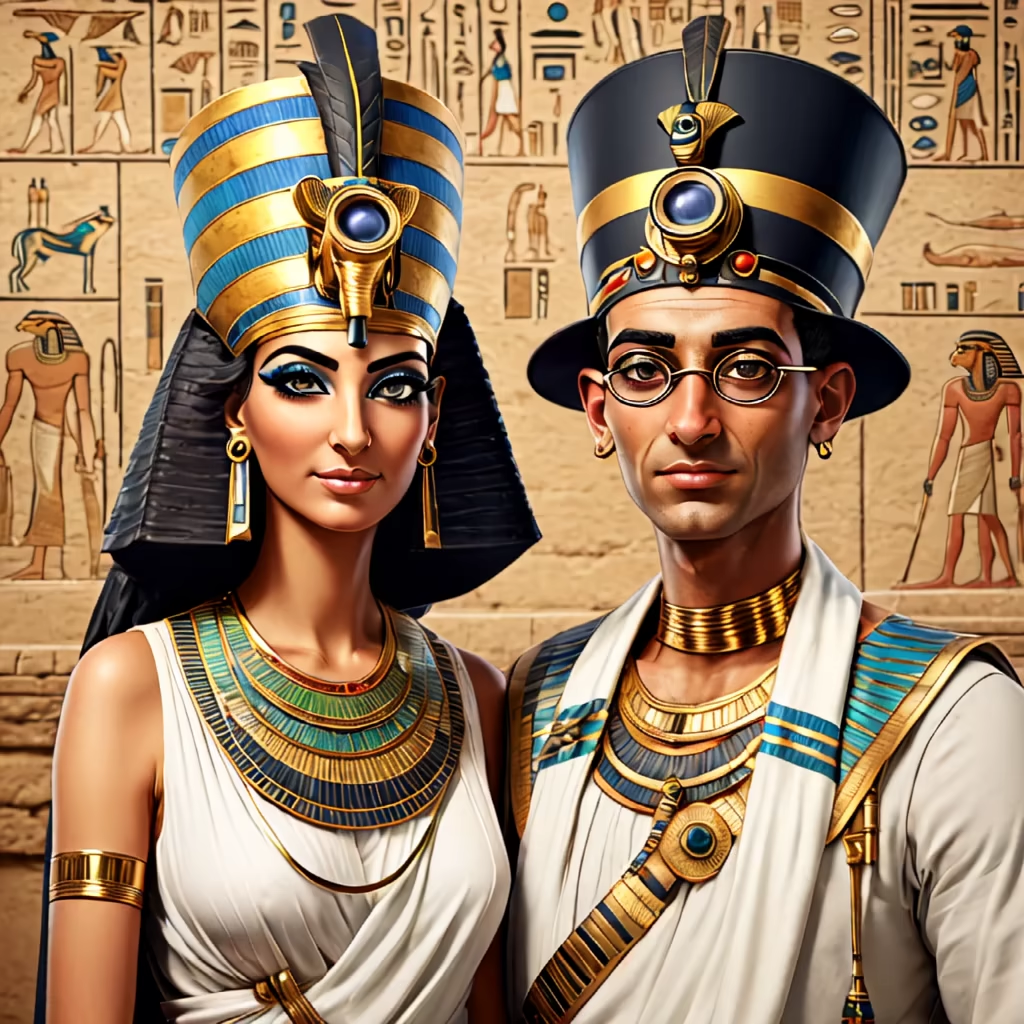

Prompt: In Greek mythology, the Titans (Ancient Greek: οἱ Τῑτᾶνες, hoi Tītânes, singular: ὁ Τῑτᾱ́ν, -ήν, ho Tītân) were the pre-Olympian gods.[1] According to the Theogony of Hesiod, they were the twelve children of the primordial parents Uranus (Sky) and Gaia (Earth), with six male Titans—Oceanus, Coeus, Crius, Hyperion, Iapetus, and Cronus—and six female Titans, called the Titanides or \"Titanesses\" (αἱ Τῑτᾱνῐ́δες, hai Tītānídes)—Theia, Rhea, Themis, Mnemosyne, Phoebe, and Tethys. Cronus mated with his older sister Rhea, who then bore the first generation of Olympians: the six siblings Zeus, Hades, Poseidon, Hestia, Demeter, and Hera. Certain descendants of the Titans, such as Prometheus, Atlas, Helios, and Leto, are sometimes also called Titans


Prompt: In Greek mythology, the Titans (Ancient Greek: οἱ Τῑτᾶνες, hoi Tītânes, singular: ὁ Τῑτᾱ́ν, -ήν, ho Tītân) were the pre-Olympian gods.[1] According to the Theogony of Hesiod, they were the twelve children of the primordial parents Uranus (Sky) and Gaia (Earth), with six male Titans—Oceanus, Coeus, Crius, Hyperion, Iapetus, and Cronus—and six female Titans, called the Titanides or \"Titanesses\" (αἱ Τῑτᾱνῐ́δες, hai Tītānídes)—Theia, Rhea, Themis, Mnemosyne, Phoebe, and Tethys. Cronus mated with his older sister Rhea, who then bore the first generation of Olympians: the six siblings Zeus, Hades, Poseidon, Hestia, Demeter, and Hera. Certain descendants of the Titans, such as Prometheus, Atlas, Helios, and Leto, are sometimes also called Titans


Prompt: In Greek mythology, the Titans (Ancient Greek: οἱ Τῑτᾶνες, hoi Tītânes, singular: ὁ Τῑτᾱ́ν, -ήν, ho Tītân) were the pre-Olympian gods.[1] According to the Theogony of Hesiod, they were the twelve children of the primordial parents Uranus (Sky) and Gaia (Earth), with six male Titans—Oceanus, Coeus, Crius, Hyperion, Iapetus, and Cronus—and six female Titans, called the Titanides or \"Titanesses\" (αἱ Τῑτᾱνῐ́δες, hai Tītānídes)—Theia, Rhea, Themis, Mnemosyne, Phoebe, and Tethys. Cronus mated with his older sister Rhea, who then bore the first generation of Olympians: the six siblings Zeus, Hades, Poseidon, Hestia, Demeter, and Hera. Certain descendants of the Titans, such as Prometheus, Atlas, Helios, and Leto, are sometimes also called Titans


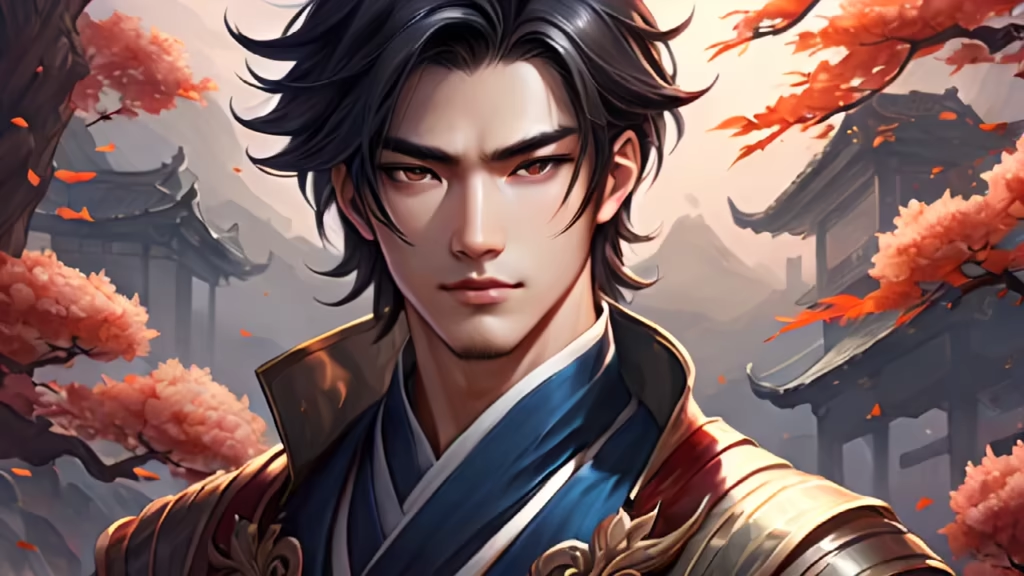

Prompt: the ultra detail indian native amercian Wars attack of 1807 ,full body sculptures , kris kuksi made with dirt brown silicone highly detail ,guernica pablo Picasso's style, diesel punk, madmax fury road style ,zoetrope city of the dead,future dystopia, necromancy,highly detailed, white background






